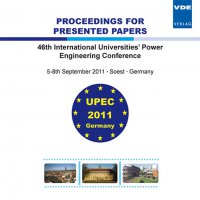Optimum Position of a Grounding Wire within a Building for Reduction of Lightning Surge Voltages
Konferenz: UPEC 2011 - 46th International Universities' Power Engineering Conference
05.09.2011 - 08.09.2011 in Soest, Germany
Tagungsband: UPEC 2011
Seiten: 5Sprache: EnglischTyp: PDF
Persönliche VDE-Mitglieder erhalten auf diesen Artikel 10% Rabatt
Autoren:
Okumura, Kazuhiro; Uno, Hiroki; Nagai, Yutaka; Ametani, Akihiro; Baba, Yoshihiro; Nagaoka, Naoto (Doshisha University, Japan)
Inhalt:
When a building is struck by a lightning, a high surge voltage between a grounding wire within the building and a building structure is produced. An effective grounding method and a position of the grounding wire for reducing the overvoltage are proposed in this paper. The overvoltage is evaluated by means of a numerical electro-magnetic field analysis method and by experiments using a scaled-down building model. The lightning current flowing into outside pillars is larger than that into a center pillar because of the skin effect. The maximum voltage between the grounding wire and a structure depends on the current distribution. The characteristic of the maximum voltage versus distance between the grounding wire and a structure is independent from the building configuration. The transient voltage is reduced by 40 % when the grounding wire is installed nearby the center pillar, and by 54 % when the common grounding method is also applied. The grounding wire installed nearby the center pillar is the optimum position for reducing the overvoltage.


